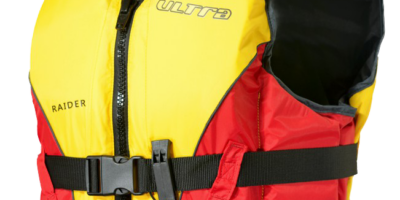How Long Do Road Flares Last?
How Long Do Road Flares Last?
Road flares are a common tool used for emergency signaling. They are essential in alerting other drivers of hazards ahead. Understanding the lifespan of road flares is important for safety and preparedness.
Types of Road Flares
There are different types of road flares available:
- Traditional Pyrotechnic Flares
- LED Electronic Flares
- Chemical Light Sticks
Traditional Pyrotechnic Flares
Pyrotechnic flares use a chemical reaction to produce bright, burning light. These are the most common and have been widely used for many years. A typical pyrotechnic flare burns for around 15 to 30 minutes. The exact duration depends on the specific brand and model.
These flares have a shelf life. Manufacturers usually suggest a shelf life of three to five years. The performance can degrade over time due to moisture and other factors. Exposure to extreme temperatures can also affect their reliability.
LED Electronic Flares
LED flares are a modern alternative. They use battery power to produce bright, flashing lights. Such flares are reusable and tend to be more durable. The burn time for these flares can vary, often lasting from 20 to 60 hours on a single set of batteries.
They have a longer shelf life compared to pyrotechnic flares. Proper maintenance, like checking and replacing batteries regularly, can extend their usability. LED flares are less affected by weather conditions.
Chemical Light Sticks
Chemical light sticks are another option. These work by mixing two chemicals inside a plastic tube to produce light. They usually last for 8 to 12 hours once activated.
The shelf life for chemical light sticks is usually four to five years. Exposure to sunlight and extreme temperatures can shorten their lifespan. Keep them stored in a cool, dry place to maximize their longevity.
Factors Affecting Lifespan of Road Flares
Several factors can influence how long a road flare lasts or remains effective:
- Storage Conditions
- Temperature
- Exposure to Moisture
- Frequency of Use
Storage Conditions
Proper storage is crucial. Flares should be kept in a cool, dry place. Avoid areas with high humidity to prevent degradation. For pyrotechnic flares, keep them away from ignition sources.
Temperature
Extreme temperatures can impact flares’ effectiveness. Heat can cause chemical degradation. Cold temperatures can make batteries less effective in electronic flares. Always store flares within the recommended temperature range.
Exposure to Moisture
Moisture can cause significant damage, especially to pyrotechnic flares. It can affect the chemicals inside and make them less reliable. Electronic flares can also suffer from corrosion if exposed to moisture.
Frequency of Use
Regular use means regular wear and tear. Pyrotechnic flares are one-time use items. LED flares and chemical sticks can only be used a certain number of times before they need to be replaced.
Signs Your Road Flares Need Replacing
It’s essential to check your flares periodically. Replace them if you notice any of these signs:
- Damage to the packaging
- Corrosion or rust on the external surface
- Discoloration or leakage of chemicals
- Expired shelf life date
- LED flares not lighting up properly
Damage to the Packaging
Inspect the packaging for any tears or holes. Damaged packaging implies potential exposure to harmful elements. This can decrease the reliability of the flare.
Corrosion or Rust
Corrosion or rust indicates exposure to moisture. This can compromise the functionality of the flare. For electronic flares, rust can damage the internal circuitry.
Discoloration or Leakage
Any discoloration or leakage indicates chemical degradation. This is particularly crucial for pyrotechnic and chemical light sticks. These flares should be replaced immediately.
Expired Shelf Life Date
Always check the expiration date. Using flares beyond their shelf life can be unreliable and unsafe. Manufacturers provide these dates based on the longevity of the materials used.
LED Flares Not Lighting Properly
If LED flares do not light up correctly, check the batteries first. If the problem persists, it might be time to replace the flare. Regular maintenance can help extend the life of LED flares.
Proper Disposal of Road Flares
Disposing of old or expired road flares should be done responsibly. Pyrotechnic flares contain chemicals that can be hazardous. Do not throw them in regular trash bins. Contact local hazardous waste disposal services for proper guidance.
For LED flares, consider recycling the electronic components. Many communities have electronic recycling programs. Similarly, chemical light sticks should be disposed of according to local regulations to prevent environmental harm.
Conclusion Tips
Road flares are invaluable for road safety. Knowing their lifespan and maintaining them can ensure they work effectively when needed. Regular checks and proper storage can make a significant difference.

